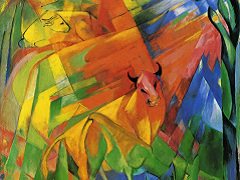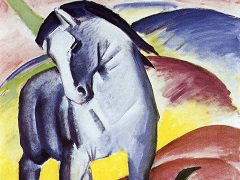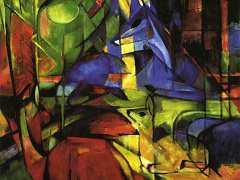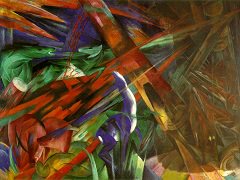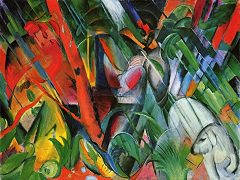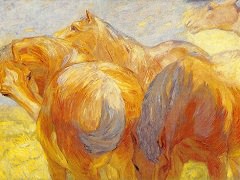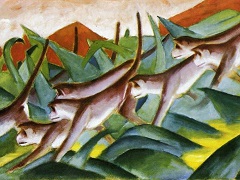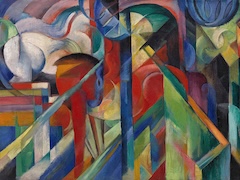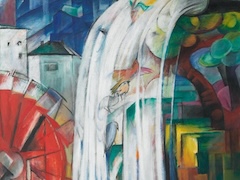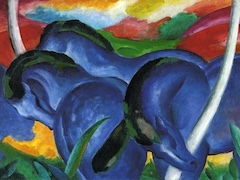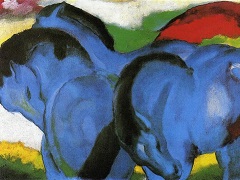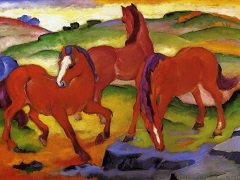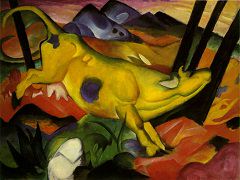The Tower of Blue Horses, by Franz Marc
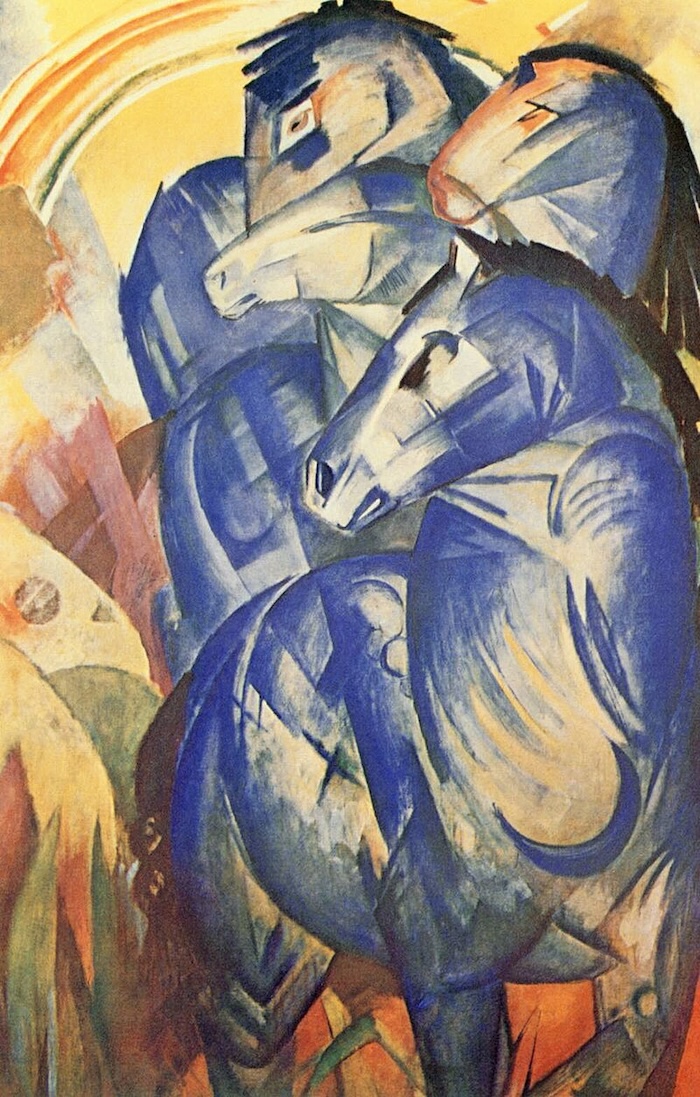
On its surface, The Tower of Blue Horses presents a far less dramatic image than Fate of the Animals. There are no streaking diagonals, no screaming helpless animals, no forest in flames, that give the latter painting such an overwhelming sense of action, and indeed, such an omnipresent aura of disaster. There is nothing rushed, nothing frantic, nothing desperate about The Tower of Blue Horses. At first glance, the two paintings may appear totally dissimilar in their imagery and thematic representation. Upon closer examination of the second of these major works, The Tower of Blue Horses, we shall see that this is not, in fact, the case.
Whereas Fate of the Animals is a work constructed primarily upon diagonals, The Tower of Blue Horses is built predominantly upon verticals. The most immediately observable feature of this construction lies in the configuration of the animals themselves. Ignoring linear perspective, Marc has arranged four blue horses, one above the other, on either an ascending or descending plane. The body of the lowest horse, its lines clear and precise, is echoed in the bodies of the two horses immediately above it, and, in seeking to solidify this construction, the artist has traced a vertical line which leads from the right foreleg of the lower foreground horse, into the body of the horse occupying what would appear to be the middle ground, and which culminates in the shank of the third and most elevated horse in the background. The line is continued from the tail of this horse into the sky, above ad behind it, where we can quite readily see a distinct separation into yellow and blue segments.
Another significant aspect of this verticality can be noticed in Marc's depiction of the landscape. Here we see three massive, boulder-like objects piled one on top of the other, the culminating in the triangular mountainous from of the highest of the three. Above this mountainous form, a somewhat modified rainbow, composed only of red, orange, yellow, and green, forms an arc across the top left-center of the painting, sweeping behind the most elevated of the horses and ending at the head of the seemingly transparent, red-faced horse at the upper right.
The central focus of the Tower of Blue Horses is, as one might reasonably anticipate, on the horses themselves. Neither the depiction of a group of horses nor the position which the horses which the horses of the painting occupy represents an entirely novel departure for Mar. As we have seen, his preoccupation with the representation of horses goes back at least as early as 1905, and his first attempt to realize a harmonious grouping of these animals is dated once year later. Initially, however, his preference seems to have been for a horizontal emphasis.
Painted a few months before Fate of the Animals, in the winter of 1913, The Tower of Blue Horses was also first exhibited at the First German Herbstsalon in the fall of that year. In 1919 it was purchased by Ldwig Justi for the National Gallery in Berlin, where it remained for the next eighteen years. It was declared "degenerate" by the Nazis in 1937, removed from its position in the National Gallery, and exhibited in the "Entartete Kunst" exhibition held in Munch that same year. Considerable protest, however, was voiced throughout Germany at Marc's inclusion in the exhibition. Apparently, the protest was successful for Hitler himself ordered the immediate removal of Marc's paintings from the show. Oddly enough, it was the last opportunity of the public to view The Tower of Blue Horses, for, since its removal from the notorious 1937 extravaganza, the location of the work has continued to remain a mystery.

